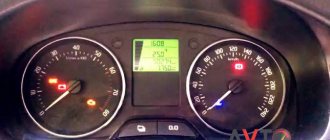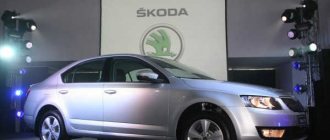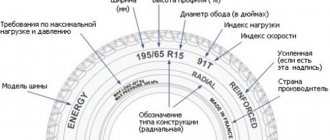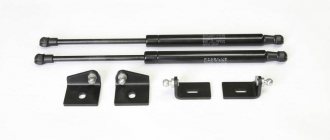For a considerable part of the population, a car has remained a luxury since the times of the USSR, which, if you buy, is obviously for a long time. Since the fall of the Iron Curtain, there have been legends about the notorious “German quality” (the Skoda brand has long been ingrained in people’s memory as a “cheap Volkswagen”) of vehicles. AvtoVAZ “gained fame” as a car, which greatly hinders its development. Even specialists from Renault and Nissan cannot regain lost trust, but with the release of a new model range, it is beginning to acquire a lighter shade.
Which is better: Skoda Rapid or Lada Vesta
We will find out which of them will win today’s “race” after a short time (depending on your reading speed). When comparing facts about the Lada West and the Skoda model, a funny fact emerged: the body types of the tested products of the automotive giants are significantly different. The Rapid is a liftback, the vesta can only be presented as a sedan and, more recently, as a station wagon. Taking into account that the competitors from VAZ & VAG (what consonant abbreviations) belong to the same class B+, we come to the general opinion that it is reasonable to compare the Lada Vesta with the Skoda Rapid. At first glance, you can find out about the choice of the majority of Russians by looking at the number of Lada Vesta sales. Afterwards, compare the number of Skoda copies sold and the trick. Let's take a closer look at what merits each car is chosen for. Of course, we won’t keep silent about the “cons” of each model discussed today.
Maintenance costs
When it comes to the cost of car maintenance, many car enthusiasts will naively assume that the Russian model will cost them less to maintain. Of course, this is actually true, however, the difference is not as significant as it might seem at first glance. This is due to the fact that the Skoda Rapid is a real bestseller in the previous generation, and a vehicle aimed primarily at the middle class of motorists. If we talk about regular fuel costs, then Lada Vesta is somewhat ahead of its competitor, since this sedan can be refueled with AI-92 fuel, which currently costs an order of magnitude cheaper than gasoline with a higher octane number. At the same time, in terms of efficiency, the Skoda Rapid outperforms its rival, which is why the difference is not so noticeable with minimal mileage.
Skoda Rapid or Lada Vesta? What's better - salon
“our” car or a foreign one? From the inside, the VAZ looks more modern: an instrument panel with deep “wells”, an interesting torpedo shape, front seats with good lateral support. There is enough space in the back row even with a driver and a passenger sitting in front with long limbs; getting into the cabin through the rear doors is not a problem. This should appeal to young users (approximately under 40 years old). We cannot fail to mention the fairly good viewing angle. Poor visibility (especially when reversing) forces consumers to pay for the additional installation of parking sensors with other rear view cameras. Of course, if it is not provided for in the package. Sales people are very pleased with the growing profits for installing additional add-ons. The air conditioning system for vesta, which is necessary for many, is available in any configuration, with the exception of the basic one (vesta classic). Performs assigned duties well, even on a summer day there is a risk of freezing. The sound insulation of the fret is made a little better, thanks to the use of felt instead of plastic fender liners. There was also a “fly in the ointment”:
the brake and accelerator pedals were placed too close; design miscalculation in the placement of the driver's armrest; The quality of the plastic is poor, the “crickets” will not take long to appear again. It’s surprising that even today the manufacturer of the Russian model is not too lazy to remind you that there is a cup holder in the cabin!
The interior of the competitor from Deutschland looks quite “German”, has almost standard ergonomics, better plastic quality, and the fit of parts is also at a higher level - in a word, classic. The seats have unobtrusive lateral support, but remain comfortable. Air conditioning is installed from the factory only on the Ambition package; it can be installed on the Active and Entry packages for additional money. Style cannot be equipped with an air conditioning system at all - it has climate control. It turns out that the target audience of the Rapid and the Lada Vesta are very different people. Even the almost perfect Skoda is not without its drawbacks:
modest size of the driver's and front right door openings; the armrest prevents you from using the handbrake; gas pedal travel is only 5 cm; the large angle of inclination of the rear window upsets tall passengers in the rear row (they did not complain about the lack of space); there is a design flaw in the location of the front fog lights, leading to frequent glass replacement; wide rear pillars reduce visibility; The fuel tank flap cannot be closed (there is no locking mechanism
Story
The popular subcompact Skoda Rapid car was first put on public display in the fall of 2012 in Paris. It was practically no different from the concept presented a year earlier. The Russian version of Rapid, which, by the way, is fully adapted to domestic road conditions, debuted in 2014. It is noteworthy that in 2012 the car was recognized as the best in terms of safety in the segment. It is worth noting that in the summer of 2012, the developers also presented a redesigned version of the car, called the Seat Toledo.
In the fall of 2015, the Lada Vesta car was presented, which replaced the Lada Priora. As company representatives note, 6.5 billion rubles were spent on the development and design of the model, which automatically made Vesta one of the most expensive projects in the Russian automotive industry. In terms of safety, Lada Vesta is one of the best in terms of safety, and confidently surpasses models such as Solaris and Focus. Interestingly, Vesta was the first to receive the updated Lada logo.
Which is better in terms of career success? Today it is, of course, a Czech car.
Comparison of bodies and wheelbases
According to the characteristics indicated in the sales sources of new Lada vesta cars and a competitor from the Skoda brand, the confrontation between Russian cars (Skoda is assembled in our country) is gaining momentum. The Rapid is produced only in a liftback body, the Vesta can be produced in a station wagon and a sedan.
The Czech product beats the domestic one only in length (4483 mm versus 4410 mm). Otherwise, the Lada turns out to be a favorite: width (1764 mm -1706 mm), height (1497 mm - 1474 mm), wheelbase (2635 mm - 2602 mm). The VAZ vesta model has a smaller thickness of the “skin” to reduce weight.
First the exterior
Let's start by finding out the answer to the main question of aesthetes: which car has a better design, Lada Vesta or Skoda Rapid? To be honest, it is very difficult to answer, since the cars being compared are built on fundamentally different design concepts. Vesta is a “new wave” sedan with dynamic body contours, an abundance of smooth elements, bold stamps and inclusions of modern design solutions.
The Rapid, on the other hand, is filled with European conservatism, its exterior at first glance is a little simpler, it is replete with straight lines and sharp edges, and classic design solutions predominate. But there are also quite modern elements that give the design a special zest and even some sportiness. Examples include the mesh insert in the front bumper or the design of the optional wheel rims. Thus, it is impossible to give a convincing answer to the question of the best design; a matter of taste wins here - either conservatism or the desire for something new.
Now a little about the dimensions. The Skoda is longer than the Lada, but at the same time inferior in all other parameters. Vesta is wider and taller, and even received a larger wheelbase and +1 mm to the Rapid's ground clearance. You can compare the figures of the overall characteristics in the table below, but for now let’s say a few words about the body color options. In this component, Vesta is noticeably more variable. By the time the sedan fully enters the market, AvtoVAZ will offer 12 main options, and then will gradually increase the color range through new solutions. Just the other day, the first photos of a prototype of the two-tone body of the Russian new product (white with a black glossy roof) appeared on the Internet. Rapid responds with a modest set of 5 basic paint options.
| Model | Lada Vesta | Skoda Rapid |
| Body length, mm | 4410 | 4483 |
| Body width, mm | 1764 | 1706 |
| Body height, mm | 1497 | 1474 |
| Wheelbase, mm | 2635 | 2602 |
| Ground clearance, mm | 171 | 170 |
| Trunk volume, l | 480 | 530 |
Drive and gearbox
Today's competitors are exclusively front-wheel drive and can be equipped with manual or automatic transmission. There are no complaints about manual variable gearboxes (the exception is the “inherited” howl of the Russian-made VAZ manual transmission on Lada). If “mechanics” is not given to you, with all confidence, buy only a “Czech”. The Vesta's robotic gearbox cannot be compared with the DSG type transmission offered by VAG specifically for the 1.4 liter turbo engine. If the client prefers a “classic” gearbox, Skoda has provided this option by offering a 5-speed torque converter. Gears change quickly, so you don’t have to ride behind everyone else in traffic.
Salon
Looking inside the West, a feeling of nostalgia appears, since many elements and design solutions remain from the “old” models. Of course, some fans of the company who are adherents of progressiveness do not like this, but, be that as it may, there is something in such a “rarity”, mixed with modern technologies.
In turn, the interior of Rapid is a bright representative of the European design style, which perfectly combines technology and rigor. Honestly, it’s difficult to compare such different salons, and it’s better for everyone to decide for themselves which is better after a test drive.
Let us only add that the Rapid is more spacious and, moreover, boasts a higher quality finish.
Whose appearance is better?
Vesta looks more aggressive in appearance (look at the front - you will notice the massive radiator grille), with emphasized “muscles” due to the presence of side X-stampings. The design of the rear lights goes well with the glitter on the trunk lid and the large bumper.
Skoda Rapid is trying to imitate its “big sister” - the Octavia, so much so that an ignorant person would confuse it (the A7 body is in pre-Restyle, which caused the Octavia-vods to “burn” rather sourly). Correct shapes, classic outlines in the Volkswagen style, calm design give a certain solidity in appearance. The type of car instantly becomes noticeable - beauty lies in simplicity. The almost square lights at the stern of the rapid only confirm these arguments.
What is better to choose
Even if we fully take into account all the advantages of the Czech new product, it is quite difficult to unequivocally answer the question of which of the presented cars is better, for the simple reason that the domestic car also has some trump cards. In particular, it is the price, which for many modern motorists becomes the main factor in the process of choosing the most suitable vehicle. If we talk about the Skoda Rapid, then this model has advantages in appearance, technical equipment, and also in the power unit.
Car trunk
I feel your patience is coming to an end, because not a word was said about the capacity of the Rapid's trunk. The luggage compartment can accommodate as much as 530 liters. versus 480 hp available to users of the Lada Vesta sedan. We do not take the “Okay” station wagon into comparison due to the lack of similar performance in the presented car from VAG (Spaceback can be compared with the SW/SV cross station wagon, which will not happen now).
Comfort and safety systems
Both the sedan and the liftback are well equipped. The list includes numerous security systems that are found in high-end models. It is noteworthy that before the appearance of the Russian sedan, many experts were skeptical about quality. However, the engineers managed to dispel the boring stereotype about the low quality of elements and assembly. Practice proves that breakdowns of modern Vesta are a rare occurrence. Manufacturers did not skimp on security systems either. Even in a minimal design, they are enough to minimize the consequences in the event of an accident. Comfort systems are brighter and more noticeable in the highest trim levels, which is understandable given the significant increase in price.
Chassis
Ground clearance (178 - 170 mm) - +8 mm in favor of the Volga car. There are no innovations at the front - only traditional MacPherson struts. A semi-independent beam is quite reasonably located at the rear (surprisingly, even in the configuration for a “supercharged” engine, an independent multi-link is not offered). “Czech” has a minimum of 14 wheels, the Lada is shod with 15 wheels.
Thanks to the suspension tuners, the Rapid seems more collected, but cannot boast of ride comfort in most of the Russian Federation; sometimes shock absorber breakdowns occur in the product of the Czech brand. Vesta steers a little worse, although on washboard-type roads it’s more pleasant to be inside its cabin.
What to buy in the end?
So which is which is better? Skoda Rapid or Lada Vesta? The comparison showed that both models are as close as possible to each other. Here, personal perception of the body, specific capabilities, impressions and wishes will play an important role. Each of the models has strengths and weaknesses that can be a serious problem in certain situations. For example, the Lada Vesta, due to the characteristics of the body, makes it possible to transport less cargo in the luggage compartment than a liftback. If a car is purchased for the constant transportation of cargo, then the choice is obvious.
On the other hand, Skoda is suitable for those who value a world-famous brand. The Russian model, although not so well known, will allow you to save a little. Even if not in its “pure” form, you can use the difference to buy a package you like with comfortable functions. Both versions are well equipped and the amount of equipment corresponds to the stated price.
The choice of equipment is not the only difficulty. The buyer will have to decide on a suitable engine, of which there are plenty. Most of the engine range is occupied by naturally aspirated engines, but Skoda also received the only turbocharged one. For connoisseurs of speed, Lada has prepared a special “charged” sedan with the Sport index.
Skoda will be chosen by connoisseurs of calm design and classic performance. The Russian model is made in a corporate style with an abundance of X-shaped stampings and elements. Designer finds are more to the liking of the younger generation, while the older generation values reliability and confidence in high quality more. Low consumption and compact dimensions are ideal companions for urban use, but the models also show their advantage on the highway. It is better to avoid trips to nature, since the ground clearance will not be enough to overcome difficult obstacles - you can lose your bumper or damage the suspension.
The advantages of Vesta include the alternative body. In addition to the sedan, the manufacturer offers a station wagon. The liftback tries to combine the modesty of a sedan and the practicality of a station wagon. In addition, the sedan is sold in a sports and bi-fuel version, which the Czechs did not allow themselves.
Engine performance and fuel consumption
Let's look carefully: all “metal hearts” are powered exclusively by AI-95 gasoline and have 4 cylinders. The range of Skoda Rapid engines is slightly wider: 3 versus 2 for the Vesta. The initial 1.6-liter power unit is a naturally-aspirated 16-valve engine with a power of 90 hp/4250 rpm, torque is 155 Nm/3800 rpm, a maximum speed of 185 km/h, acceleration to 100 will occur in 11.4 seconds. The second engine is similar to the first, but produces 110 hp. at 5800 rpm, the torque remained the same. The time before the first hundred became just over 10 seconds, and the “maximum speed” increased to 195 km/h. Naturally aspirated engines consume up to 5 l/100 km on the highway and up to 8 in the city. The third engine - 1.4TSI with a power of 125 horses at 5000 rpm has a torque of 200 nm in the range of 1400-4000 rpm. Acceleration to the usual 100 km/h will be only 9 seconds and will please you with good consumption (7 liters in the city and 4.3 liters on the highway).
The VAZ can be equipped with 1.6 engines with a power of 106 horsepower, a torque of 148 nm at 4200 rpm, and a 1.8 liter with a return of 122 hp/170 nm at 3750 rpm. The disappointment will come due to the slightly increased consumption: the smaller unit consumes 6.2 liters. on the highway and 10.2 liters. in the city. The more “angry” one devours gasoline more readily - 6.7 and 10 liters, unlike its smaller brother.
Lada Vesta vs Skoda Rapid and Peugeot 301: who will win?
And hello again: having completed our single test drive, the most long-awaited premiere of this year, Lada Vesta, is participating in a comparative test today. We pitted against it the reference Skoda Rapid and one of the largest cars in the B+ segment, also assembled in Belarus, the Peugeot 301. Whose will take it?
When choosing a car, no one walks around with a ruler or a large bag to evaluate consumer qualities and spaciousness - they trust information from the manager and their own feelings. And today we also decided not to engage in “literalism” and rely entirely only on sensations: what we like and what we don’t like, what irritates us and what doesn’t cause inconvenience. And what impression does the new Lada Vesta make against the backdrop of “real” foreign cars?
Design. The brightest, of course, is Lada. The much-hyped “X-design” does its job: people pay attention to the car, follow it with their eyes, and turn around. Muscular stampings are also good in their own way, at least they make Vesta look interesting in profile. And only from the rear the car does not represent anything unusual: the lights are somewhat reminiscent of the “tenth” Lancer, and only the large Lada inscription on the trunk lid allows neighbors downstream to understand what kind of car is in front of them.
Skoda Rapid is the most inexpressive, but at the same time the most harmonious. It doesn't excite me, but it doesn't irritate me in any way. A neat, well-tailored European car. A special plus for the designers is that the liftback body does not show itself in any way: in our country sedans are considered to have higher status, but this does not bother the owner of the Rapid at all - it looks like “one of our own.”
The most distinctive appearance is that of Peugeot. It tries to appear big and important - and visually it does look like a larger car. However, this does not make it beautiful: the trunk looks disproportionately large, and as a result, the design cannot be called harmonious. Although we don’t insist: someone might like it.
But if you look in profile, Peugeot already looks “cooler” than everyone else - more solid, more massive. So we’ll give everyone the same marks for design.
By the way, we can also praise the Lada designers. Despite the fact that Vesta has the highest ground clearance, 178 mm, this is not visually striking: the car looks fast and squat. And what will our rivals inside please us?
We talked about the Lada Vesta just the other day, and so far we have nothing to add to our first impressions: comfortable fit, wide range of adjustments, impeccable ergonomics and a nice interior with well-chosen materials. Moreover, it is well assembled, no worse than those of its rivals in the test.
However, when you get into the Skoda, you realize that there is no limit to perfection. If in the Lada the interior is well assembled and the ergonomics are also good, then in the Rapid everything is simply filigree and flawless. And literally everything, from the perfect seat profile to the precise operation of the volume control knob or gearshift lever. Here the box pleases with almost “weapon-grade” clarity, but in Lada it just works fine. In general, Lada is good, Skoda is excellent.
What about Peugeot? By the standards of its class, the interior of the 301 is quite good, but directly within the framework of this test it is the most “budget” one. And not so much in terms of materials, because the plastic is quite good, but “ideologically”: the power window keys located on the center console and only two speakers in the front demonstrate outright savings on the most common little things. Again, the gearbox here has large strokes, even indecently large compared to the Lada. And the steering column is adjustable only in height, which does not allow you to get behind the wheel as comfortably as in the other two cars.
But when you move back, the Peugeot 301 instantly becomes the most desirable car. Yes, this is a limousine! I sit behind myself with such a margin that not only do I not touch the backrest with my knees, I completely stretch my legs forward, and there is still room under the front seat! Since the central tunnel practically does not protrude into the cabin, three passengers can use such limousine space, fortunately the width allows it.
Skoda is trying to compete with Peugeot in terms of space in the rear seats, but only partially. There is a little less space along the length, but thanks to the fact that the front seats are raised higher, there is plenty of room to put your legs. The result is that it’s not crowded behind you. But only two, because the Rapid is the narrowest in our test and has the tightest cabin width.
But the Lada offers a very large amount of space just in width; its central tunnel is also small, so five passengers in the cabin will be quite comfortable. But only on the condition that they are all not very tall. The length reserve is the smallest in this test, and the front seats are lower, so you can’t really put your feet under them in winter shoes. But the relative cramped interior of the Lada is revealed only by direct comparison - in itself it is quite spacious.
In terms of trunk space, of course, the Rapid wins - it has the maximum volume (550 liters) even in its normal form, and even with the backrests folded, with its almost one and a half “cubes”, Skoda generally breaks away from its competitors. Which can offer either 480 liters (Lada) or 506 (Peugeot), and among the transformations - only folding rear seat backs, which will allow you to transport long objects. However, if the object is not only long, but also large, only Skoda will help out.
The most popular in the B+ segment are gasoline engines, and if we talk about displacement, the “golden ratio” is 1.6 liters. Many models have it in the basic version, some only in more expensive trim levels, but this cubic capacity can be found on almost any model. However, despite the same displacement, all engines have their own special character.
The most powerful in the test is the Peugeot 301, its engine develops 115 hp. According to the technical data, it is also the most dynamic - only 9.4 seconds from zero to 100 km/h. But at the same time, the fastest is the 110-horsepower Rapid (105-horsepower engine in the photo), and it is also the most economical: in all modes it consumes at least half a liter less fuel.
The Lada Vesta has the least powerful engine - 106 hp, but it is also the slowest to accelerate - it reaches a hundred in almost 12 seconds. However, numbers are one thing, and real sensations are another.
And based on these same sensations, the Skoda Rapid seems to be the fastest and most dynamic - it reacts faster and more correctly than anyone else to movement of the gas pedal. At the same time, the engine does not “think”, it accelerates immediately and very vigorously, and this makes the Rapid seem like the most driver-friendly one. And the most pleasant thing to drive is also the informative clutch, the standard feedback force on the steering wheel, the “tight” European chassis... The Rapid definitely gives the driver the most “low-budget” sensations.
But Lada is not far behind. In terms of maximum acceleration, it lags a little behind, but in terms of driver sensations, engine agility and everything else that makes up the correct image of a “driver’s” car, Vesta is very good. Although, again, as in the case of the interior trim, it is somewhat rough compared to the Skoda - the steering wheel is not so “transparent”, you feel the car less sharply when cornering... But in return, Vesta gives peace and quiet: it has very good sound insulation, the noise level is noticeable lower than that of competitors.
However, Peugeot cannot be called noisy either - its engine is better isolated than anyone else, and other acoustic irritants are muffled very well. Plus, the engine very smoothly, as if reluctantly, picks up speed, which makes the car seem even more “relaxed”. And on a good road, the 301 simply lulls you to sleep - its suspension seems cotton-soft, which, combined with the too light steering wheel, creates the impression of flying above the road.
However, this is an illusion: as soon as you leave the highway and get on an ordinary suburban road, Peugeot will immediately let you feel all the features of the work of Belarusian automakers. No, the car does not become rigid, but its suspensions seem slightly short-travel, because there are quite a lot of lateral vibrations, which makes you want to let off the gas and drive more quietly. However, we must pay tribute: even on the toughest pits, the suspensions are very quiet.
But if the Peugeot wants to let off the gas, the Skoda driver is not averse to turning around and going the other way - its “European” chassis, which we liked so much on the highway, turns out to be very hard and noisy on uneven roads. If the 301st sways on uneven surfaces, then the Rapid shudders with its entire body, reporting all changes in the terrain. No, seriously, in a Skoda the same road seems twice as bad as in a Peugeot.
But when you get into the Lada, you start to think that in those 5 minutes while you were changing the car, the road workers found out about our test drive on this section and made urgent repairs. Where are the pits? Where are those terrible joints that were so scary in Rapid? And why does Vesta want, on the contrary, to press the gas harder on these same potholes? The answer is simple: pendants. Large clearance, long strokes and very good settings make Vesta an excellent “cruiser” for our ordinary roads. As part of another test, we tried it in “rally” mode on a dirt road - even there it drives like it’s on a street! Well done, really well done - the Lada Vesta chassis can be given a separate Oscar.
But doesn’t such “armor-piercing” hinder it at high speeds on asphalt? No, only the non-switchable stabilization system “gets in the way”, which prevents the driver from “nervous” the car, nipping out all unnecessary vibrations in the bud. But the chassis itself behaves just as well as in the pits, even the rolls that we feared turned out to be no more than the others.
By the way, the Skoda Rapid also has a stabilization system, also in the basic configuration. But this example, provided by a private owner, did not have such a “device” - and Rapid showed us that it can drive perfectly well without it. The reactions are moderately sharp and correct, the car perfectly does exactly what the driver requires of it.
The same can be said about Peugeot: it may not drive as standard as Skoda, but it knows its job and does not intimidate the driver. Quite the contrary: even if you openly provoke the car with sharp maneuvers, the 301 very reluctantly moves from a smooth, safe drift to an equally smooth skid. Therefore, even the absence of ESP in the basic version does not bother us at all - the car is smooth and safe.
However, in our test drive, this is not enough to become a winner: the Peugeot 301 was recognized as the best only in the “spaciousness in the rear seats” category. Well, it can also be praised for its smooth ride, sound insulation and safe chassis settings. However, the Lada Vesta also has all this - plus “armor-piercing”, perfectly tuned suspension, huge ground clearance, bright appearance, high-torque engine and a very interesting price. That's why she comes in second place. And on the first one, as you may have guessed, Skoda Rapid. In many respects it can be considered a standard: ergonomics, seat shape, seating position, handling, torque and elasticity of the engine, behavior in normal and extreme modes. The only serious drawback is the overly stiff suspension, which “gives away” itself on uneven roads. But now there is a Lada Vesta especially for such roads...
Opinion
Artem, owner of Skoda Rapid:
“Today I was invited to a test drive with the participation of Lada Vesta and Peugeot 301. Since I drive a Skoda Rapid, it was very interesting for me to compare all three cars.
So, in front of me is Vesta. If you remove the Lada badge, you won’t be able to tell that it’s a Lada. Most likely, a budget foreign car. The appearance is quite good. But what's inside? But inside it’s still a “Lada.” Seats without support. The gear lever is like a golf club. The steering wheel is leather with perforations, but the leather looks very cheap. You need to get used to the dashboard for at least a week, or even a month. Everything is rough and oaky.
Next I approached the Peugeot 301. The “muzzle” is very cute. The design is generally good. And in the cabin there is quiet horror. The gearshift lever moves like in a tractor. The steering wheel is not adjustable for reach. The air recirculation lever in the cabin is manual (on a cable), and you can feel how this cable opens or closes the damper. I would never buy a 301.
Overall, the Lada Vesta is a good car, but overpriced. I would save a little more and still buy a Skoda Rapid, in which everything is in perfect harmony.”
Yuri Gladchuk, correspondent:
“To be honest, I knew the results of the comparative test even before it started. And not because we were “bought” by Skoda. The guys from the dealership when they found out that we were going to compare their precious Rapid with some kind of Lada Vesta and Peugeot 301. We had to turn to our reader Artem for help so that the Russian-assembled Czech “state employee” would still appear in our comparative test.
The winner, unsurprisingly, was Rapid. The car is too German, too precise and thought out in detail. And it handles better than anyone, and the ergonomics are ideal, and the finishing materials are not bad, and the trunk is comfortable. So what, should I now run out and buy Rapid?
No. The engine in the cabin is louder than that of the Vesta. There is not enough sound insulation of the arches. Such precision in detail - and such noise from the wheels? I would like it to be quieter. According to the passport seconds, the “Czech” is significantly ahead of the “Russian”, and will probably overtake him in a doubles race, however, according to subjective sensations, the Lada accelerates faster due to better traction in the low speed zone. In addition, the Rapid is too asphalt, its chassis balance is biased towards handling. And Vesta pleases with good handling and energy-intensive suspensions coupled with high ground clearance. And purely externally, in my opinion, Lada looks more interesting.
However, some little things about the Russian car are very frustrating. It was raining on the day of filming, so we had to constantly resort to the help of windshield wipers. So, by the end of the trip, my eye almost twitched from the annoying click of the relay with each stroke of the brushes! And the bolts are not covered everywhere. The interior smells far from “premium”. At speed, the steering wheel is slightly pinched in the near-zero zone, and after 40 km/h it does not return well to the zero position... In general, there are still questions for Lada. But choosing between Skoda Rapid and Lada Vesta, I would seriously think about: is it worth overpaying for the “Czech”?
Peugeot 301? With such a price-quality ratio, alas, the Franco-Belarusian “lion cub” will have a difficult time in the competition. Third place in our hit parade.
Prices and options
On the Belarusian market, the new Lada Vesta is offered with a 1.6-liter 106-horsepower VAZ engine and either a manual or robotic gearbox, both 5-speed. The buyer can choose from 12 configuration options: the basic Classic, Comfort and Luxe can be supplemented with the Start, Optima, Multimedia and XV Line packages. As for prices, so far the Belarusian dealer has presented a price list only for the test car in the Comfort Optima configuration - it is valued at 158.5 million rubles (almost $8,600).
In its homeland, the basic Vesta Classic costs 514,000 Russian rubles (about $7,200). Its equipment includes a driver's airbag, ISOFIX child seat mounts, automatic door locking when driving, immobilizer + alarm, daytime running lights, ERA-GLONASS emergency warning system, ABS + BAS + EBD, ESC stability control system, TCS traction control system, hill start assist HSA, engine and engine compartment protection, on-board computer, gear shift prompt, 60/40 folding rear seat back, electric power steering, steering wheel height and reach adjustment, cabin air filter, light tinted windows, folding key + remote control central locking, front electric windows, exterior mirrors with direction indicators. The top version of the Lada Vesta with a manual transmission is called Luxe Multimedia and is priced at 633,000 Russian rubles (about $8800). The most affordable Vesta with a robotic gearbox, in the Classic configuration, costs 569,000 rubles. rub. (almost $8,000), the most expensive Vesta with a “robot”, Luxe XV Line, is 663,000 rubles (about $9,300).
The Skoda Rapid is offered with two petrol engines: a 1.6-liter “mechanical”, a 110-horsepower version is also offered with a 6-band hydromechanical “automatic”, and a 125-horsepower TSI comes only with a 7-speed preselective “robot” DSG
The basic Rapid Active with a 1.6-liter 90-horsepower engine costs from 161,606,000 Belarusian rubles. Its standard equipment list includes a front airbag for the driver, rear child seat mount, ABS, ESC stability control system, central locking, outside temperature sensor, front electric windows, height and reach steering wheel adjustment, electromechanical power steering, driver seat adjustment height, heated windshield washer nozzles, thermal glass, folding backrest of the rear seat (one-piece), bumpers painted in body color, chrome radiator grille, audio preparation. The same car with a 110-horsepower engine costs from 173,242,000 Belarusian rubles.
The price tag for the 301st model now starts at 144,000,000 Belarusian rubles - we are talking about a 75-horsepower 1.2 engine and a rather modest Access package, which does not have a passenger airbag or air conditioning. Modifications with a 115-horsepower 1.6 VTi engine are available only in the following Active equipment (with two airbags, ABS, air conditioning, full power accessories, heated seats, fog lights and a CD player). The version with a 5-speed manual transmission will cost 182,900,000 Belarusian rubles, the version with a 4-speed automatic transmission will cost 196,800,000 Belarusian rubles.
Pavel KOZLOVSKY Photo by Olga-Anna KANASHITS ABW.BY
The editors express gratitude to the official dealer of AvtoVAZ in Belarus, and the official importer of Peugeot in Belarus, for the cars provided for the test
| Technical data table | |||
| Lada Vesta 1.6 5MT | Peugeot 301 1.6 | Skoda Rapid 1.6 | |
| ENGINE | |||
| Type | petrol | ||
| Number and arrangement of cylinders | 4, in-line | ||
| Working volume, cubic meters cm | 1596 | 1587 | 1598 |
| Power, hp at rpm | 106/5800 | 115/6050 | 110/5800 |
| Max. torque, Nm at rpm | 148/4200 | 150/4000 | 155/3800 |
| TRANSMISSION | |||
| Drive unit | front | ||
| Type | 5, mechanical | ||
| PENDANTS, TYPE | |||
| Front | independent McPherson | ||
| Rear | semi-independent spring | ||
| DYNAMICS | |||
| Acceleration to 100 km/h, s | 11,8 | 9,4 | 10,3 |
| Max. speed, km/h | 178 | 188 | 195 |
| ECONOMICAL | |||
| Fuel consumption in the extra-urban cycle, l/100 km | 5,5 | 5,3 | 4,7 |
| In the urban cycle, l/100 km | 9,3 | 8,8 | 7,9 |
| Combined cycle, l/100 km | 6,9 | 6,5 | 5,9 |
| DIMENSIONS | |||
| Length/width/height, mm | 4410/1764/1497 | 4442/1748/1466 | 4483/1706/1461 |
| Wheelbase, mm | 2635 | 2652 | 2602 |
| ADDITIONAL DATA | |||
| Trunk volume, l | 480 | 506 | 550-1490 |
| Fuel tank capacity, l | 55 | 50 | 55 |
| WEIGHT | |||
| Curb weight, kg | 1230 | 1090 | 1175 |
| Total weight, kg | 1670 | 1524 | 1635 |
The steering wheel of the 301 is adjustable only in height, which is why it is not possible to sit as optimally as in the other two cars.
Another “minus” of Peugeot is that the audio system speakers in the front are located only on the panel, which makes the sound very “flat” and inexpressive
Although the Lada's audio system doesn't sound much better... We found out experimentally that normal sound can only be achieved when playing from media, but the radio works so-so
The set in the spare tire is not secured and drums in the pits - we mistakenly thought that it was the Vesta’s suspension that was already knocking
Guarantee of AvtoVAZ and a competitor in the form of Rapid
For detailed information, see the websites or car dealerships of AvtoVAZ and Skoda. Let me highlight the main points:
Both concerns provide a warranty period of 3 years or 100 thousand km, subject to timely maintenance at the dealer. Skoda promises to preserve the body from through holes appearing for a couple of years longer and provides a replacement vehicle for 5 days or less if prompt repair of yours is impossible.
Equipment and cost
Manufacturers have been building their reputation for reliability for decades, and Skoda seems to have a slight edge when all models are taken into account. These are official data, while users rate the reliability of Lada with an average rating of 3.8, and Skoda models - 4.4 out of 5. In addition, drivers of cars with the same engine as the Russian car rate it an average of 3 ,0 out of 5, exactly the same as the others. The price of the Lada Vesta on sale starts from $11,200 for standard equipment, while the price for the most affordable Skoda Rapid is $15,100.
The Rapid is quite comfortable to sit on. The front seats are generally comfortable, with lateral support to keep you in place and plenty of cushion to support your thighs. Their lumbar region appears a little empty. The rear seats are firm and excellently supportive, offering adequate thigh support, generous legroom and a good amount of knee room. In Lada Vesta you will not get the same feeling of space.











